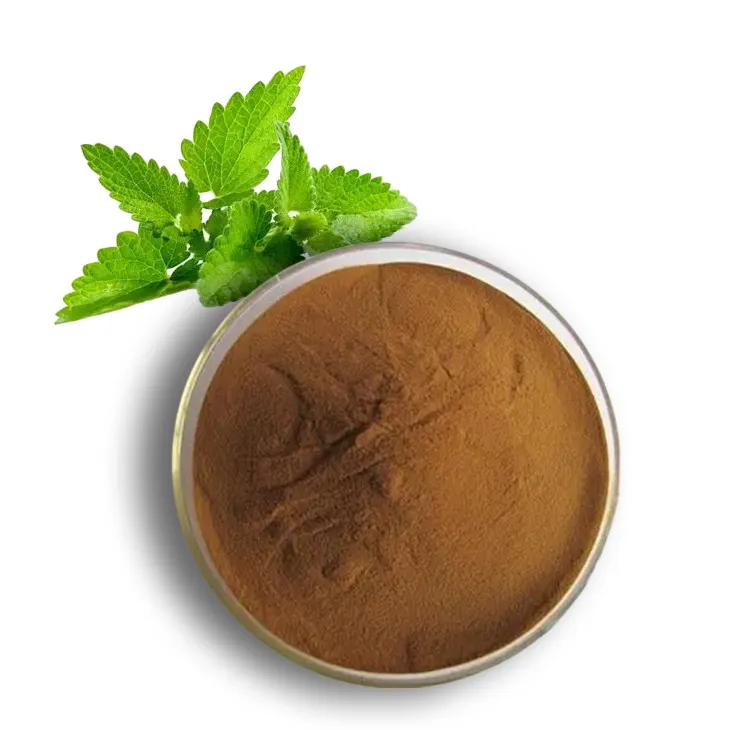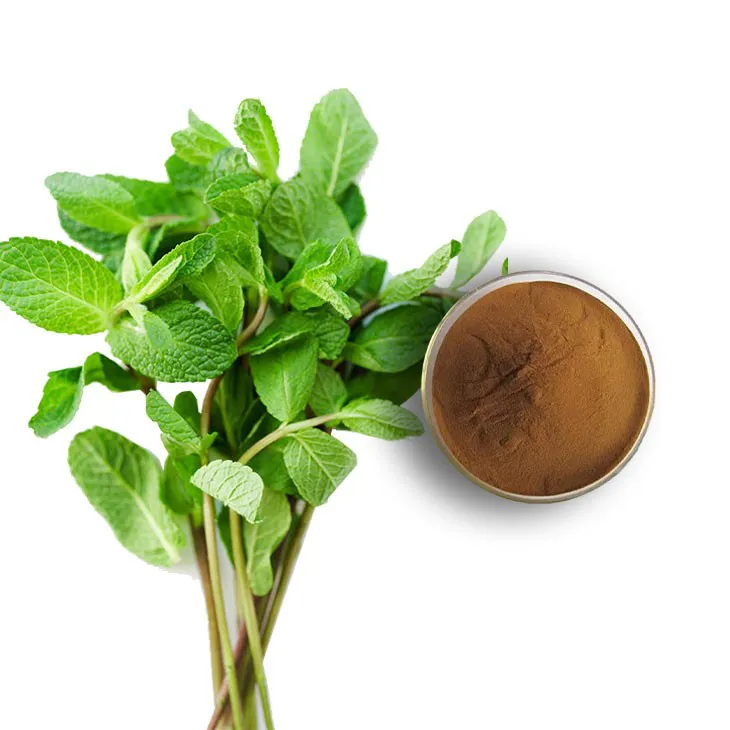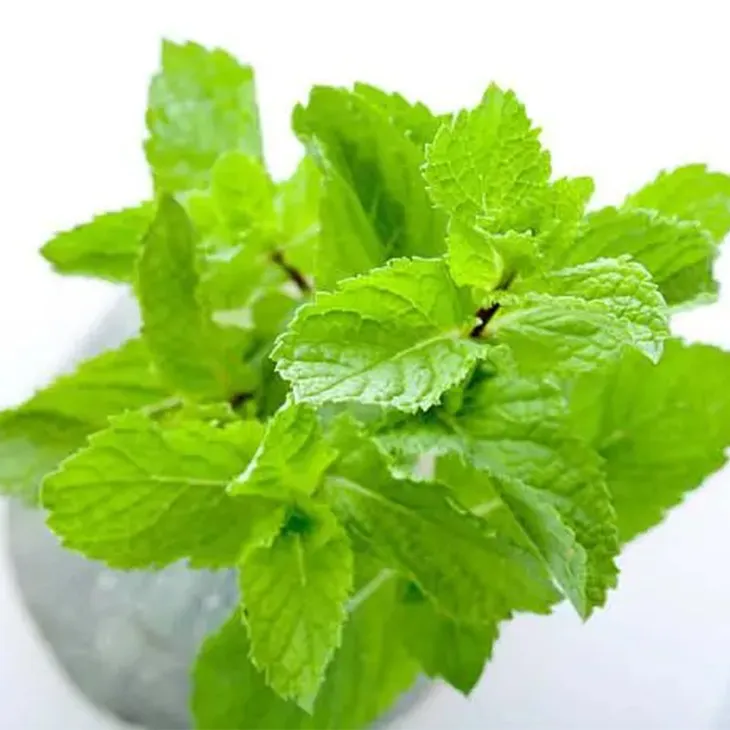- 0086-571-85302990
- sales@greenskybio.com
The process of extracting menthol crystals from peppermint extract powder.
2024-11-27

1. Introduction
Menthol, a cyclic monoterpene alcohol, is well - known for its characteristic minty aroma and cooling sensation. It has a wide range of applications in the food, pharmaceutical, and cosmetic industries. Peppermint Extract Powder serves as an important source for obtaining menthol crystals. Understanding the extraction process is crucial for ensuring high - quality menthol production.

2. Raw Material Preparation
2.1 Selection of Peppermint
The first step in the process is the careful selection of peppermint. High - quality peppermint plants are preferred. Different varieties of peppermint may have varying menthol content. For example, Mentha piperita is a commonly used variety known for its relatively high menthol levels. The plants should be harvested at the right time, typically when they are in full bloom, to ensure maximum menthol content.
2.2 Drying and Grinding
Once the peppermint is harvested, it needs to be dried. Drying helps to remove moisture, which can prevent the growth of mold and other microorganisms. This can be done using natural drying methods, such as air - drying in a well - ventilated area, or mechanical drying methods. After drying, the peppermint is ground into a fine powder. This increases the surface area of the material, which is beneficial for the subsequent extraction process.

3. Extraction of Menthol from Peppermint Extract Powder
3.1 Solvent Extraction
Solvent extraction is a commonly used method. A suitable solvent, such as ethanol or hexane, is selected. Ethanol is often preferred in the food and pharmaceutical industries due to its relatively low toxicity. The Peppermint Extract Powder is mixed with the solvent in a ratio that is optimized for maximum menthol extraction. This mixture is then stirred for a certain period, usually several hours, to ensure thorough contact between the powder and the solvent. The menthol and other components in the powder dissolve in the solvent, forming a solution.
3.2 Steam Distillation
Another method is steam distillation. In this process, steam is passed through the peppermint extract powder. The heat from the steam causes the menthol and other volatile compounds to vaporize. These vapors are then condensed back into a liquid form. Steam distillation has the advantage of being a relatively clean method, as it does not introduce additional chemical solvents. However, it may require more energy compared to solvent extraction.

4. Separation of Menthol from the Extract
4.1 Filtration
After the extraction process, whether by solvent extraction or steam distillation, the resulting mixture needs to be filtered. Filtration helps to remove any solid particles, such as plant debris or undissolved powder, from the solution. This can be done using filter paper in a simple laboratory setup or more sophisticated filtration equipment in an industrial setting.
4.2 Fractional Distillation
To further separate menthol from other components in the extract, fractional distillation is often employed. Since menthol has a specific boiling point (216.5 °C), it can be separated from other compounds with different boiling points. The extract is heated in a distillation apparatus, and the components are vaporized at different temperatures. The vapors are then condensed and collected separately. This allows for the isolation of menthol in a relatively pure form.
5. Purification of Menthol Crystals
5.1 Recrystallization
Recrystallization is a key step in purifying menthol crystals. A small amount of a suitable solvent, such as ethanol, is added to the impure menthol obtained from the previous step. The mixture is heated until the menthol dissolves completely. Then, the solution is cooled slowly. As the solution cools, pure menthol crystals start to form. The impurities remain in the solution, and the crystals can be separated by filtration.
5.2 Chromatographic Purification
In some cases, chromatographic purification may be used for a more thorough purification. High - performance liquid chromatography (HPLC) or gas chromatography (GC) can be employed. These methods can separate menthol from even very closely related compounds based on their different affinities for the stationary and mobile phases in the chromatography columns. This results in highly purified menthol crystals.
6. Quality Control
6.1 Purity Analysis
After the purification steps, the quality of the menthol crystals needs to be checked. Purity analysis can be done using various techniques. For example, spectroscopic methods such as infrared spectroscopy (IR) can be used to confirm the chemical structure of menthol and detect any impurities. Gas chromatography - mass spectrometry (GC - MS) can also be used to accurately determine the purity of menthol by identifying and quantifying any other compounds present.
6.2 Physical Property Testing
In addition to purity analysis, physical property testing is important. The melting point of menthol crystals should be within a specific range (41 - 43 °C). Deviations from this range may indicate the presence of impurities. The appearance of the crystals, such as their color and shape, should also be examined. Pure menthol crystals are typically white and have a characteristic crystalline shape.
7. Applications of Menthol Crystals
7.1 In the Food Industry
Menthol crystals are widely used in the food industry. They are added to candies, chewing gums, and beverages to provide a refreshing minty flavor. The cooling sensation of menthol also enhances the taste experience. In addition, menthol can act as a natural preservative in some food products, inhibiting the growth of certain bacteria.
7.2 In the Pharmaceutical Industry
In the pharmaceutical industry, menthol has several applications. It can be used in topical analgesics to provide a cooling and soothing effect on the skin. Menthol is also used in cough drops and nasal inhalers, where its menthol vapors can help relieve congestion and soothe irritated mucous membranes.
7.3 In the Cosmetic Industry
The cosmetic industry makes use of menthol crystals in products such as lip balms, skin creams, and hair care products. In lip balms, menthol provides a cooling sensation that can soothe dry and chapped lips. In skin creams, it can give a refreshing feeling and may have some anti - inflammatory properties. In hair care products, menthol can help stimulate the scalp and give a clean, fresh feeling.
8. Conclusion
The process of extracting menthol crystals from peppermint extract powder involves multiple steps, from raw material preparation to final purification. Each step is crucial for ensuring high - quality menthol production. With proper quality control, the resulting menthol crystals can be used in a variety of industries, providing their unique minty and cooling properties. As research continues, new methods may be developed to further optimize the extraction and purification processes, leading to even higher - quality menthol crystals with wider applications.
FAQ:
What are the initial steps in preparing the peppermint extract powder for menthol crystal extraction?
The initial steps typically involve ensuring the purity and quality of the peppermint extract powder. This may include sieving the powder to remove any large particles or impurities. Also, proper storage conditions of the powder need to be maintained before the extraction process to prevent degradation. Moisture content is a crucial factor, and if it is too high, drying steps may be required to optimize the extraction conditions.
Which solvents are commonly used in the extraction of menthol crystals from peppermint extract powder?
Common solvents used in this extraction process are organic solvents such as ethanol. Ethanol has good solubility properties for menthol and is relatively safe to use in an industrial setting. It can effectively dissolve the menthol from the peppermint extract powder. Other solvents like hexane may also be considered in some cases, depending on the specific requirements of the extraction process, such as selectivity and recovery efficiency.
How is the extraction process carried out after adding the solvent?
After adding the solvent, a process such as maceration or percolation is often employed. Maceration involves soaking the peppermint extract powder in the solvent for a certain period, usually at a controlled temperature. This allows the menthol to dissolve into the solvent. Percolation, on the other hand, is a continuous extraction method where the solvent is passed through the powder slowly. Both methods aim to ensure maximum transfer of menthol from the powder into the solvent phase.
What purification methods are used to obtain high - quality menthol crystals?
One common purification method is crystallization. After the extraction, the solvent - menthol solution is cooled slowly. Menthol has a relatively high melting point, and as the solution cools, menthol crystals start to form. These crystals can then be separated from the remaining solution, for example, by filtration. Another method could be distillation, especially if there are other volatile components in the solution that need to be removed. Distillation can help in separating the menthol based on its boiling point differences from other substances.
How can the quality of the extracted menthol crystals be ensured?
To ensure the quality of the extracted menthol crystals, several factors need to be considered. Firstly, strict control of the extraction and purification processes, including accurate measurement of solvents, proper temperature and time control during extraction and purification. Secondly, quality testing at different stages of the process, such as testing for purity, melting point, and optical rotation. Also, using high - quality peppermint extract powder as the starting material is crucial for obtaining high - quality menthol crystals.
Related literature
- Menthol: Chemistry, Occurrence, and Applications"
- "Peppermint Extract and Its Constituents: Extraction and Analysis"
- "The Industrial Production of Menthol: From Plant to Crystal"
- ▶ Hesperidin
- ▶ Citrus Bioflavonoids
- ▶ Plant Extract
- ▶ lycopene
- ▶ Diosmin
- ▶ Grape seed extract
- ▶ Sea buckthorn Juice Powder
- ▶ Fruit Juice Powder
- ▶ Hops Extract
- ▶ Artichoke Extract
- ▶ Mushroom extract
- ▶ Astaxanthin
- ▶ Green Tea Extract
- ▶ Curcumin
- ▶ Horse Chestnut Extract
- ▶ Other Product
- ▶ Boswellia Serrata Extract
- ▶ Resveratrol
- ▶ Marigold Extract
- ▶ Grape Leaf Extract
- ▶ New Product
- ▶ Aminolevulinic acid
- ▶ Cranberry Extract
- ▶ Red Yeast Rice
- ▶ Red Wine Extract
-
Aguaje Extract
2024-11-27
-
Black Pepper Extract
2024-11-27
-
Hericium erinaceus extract powder
2024-11-27
-
Red Date Extract
2024-11-27
-
Kupilu Extract
2024-11-27
-
Clove Powder
2024-11-27
-
Nutmeg Extract
2024-11-27
-
Acerola Juice Powder
2024-11-27
-
Honeysuckle Pollen
2024-11-27
-
Eucommia Ulmoides Extract
2024-11-27





















